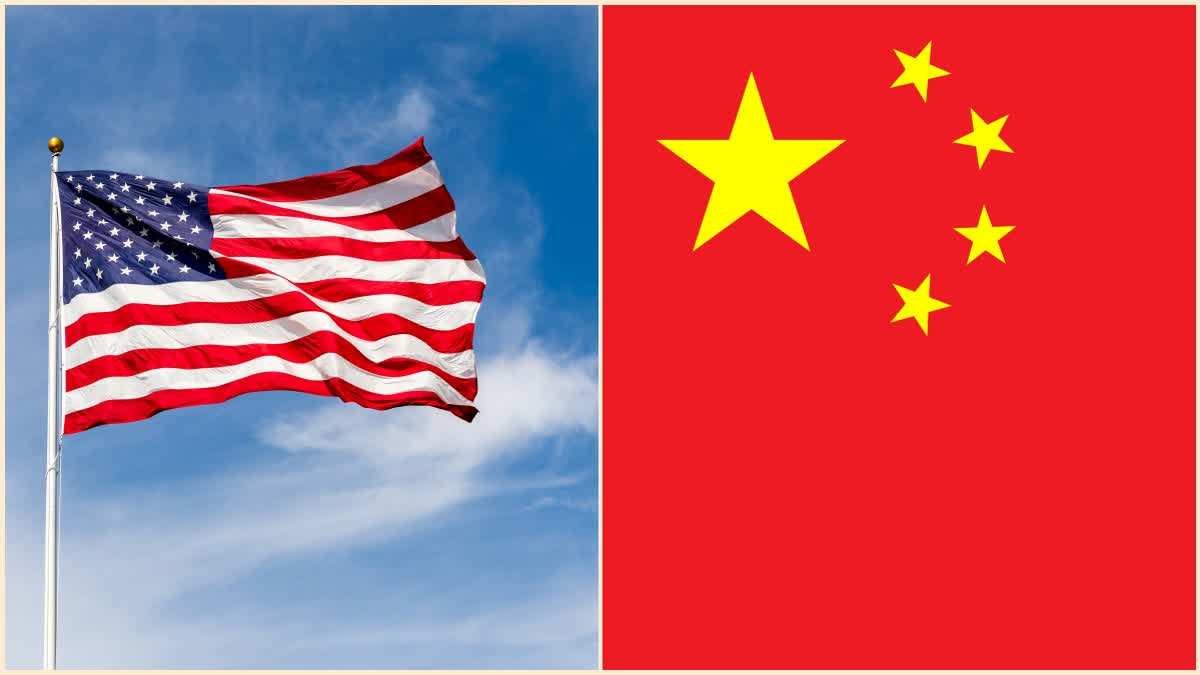The dynamics of US-China relations have long been characterised by a dual nature, marked by both competition and trade. This trend has intensified in recent years, particularly with China employing assertive tactics and gray zone strategies in the South China Sea and on a global scale.
As the political divide between the West and key regions such as Russia and the Middle East has widened due to ongoing conflicts, China has seized the opportunity to expand its influence. Consequently, two distinct world orders have emerged: one dominated by the West, and the other by an axis comprising Russia, China, Iran, North Korea, Syria, and various Global South nations that lean towards anti-Western sentiments or at best adopt a neutral stance.
China holds several advantages over the US within this axis of countries. Notably, China, having risen from the Global South, carries a history of persecution from imperial Japan and boasts a remarkable economic transformation since the 1970s.
Furthermore, China's assertive foreign policy, underpinned by a wave of domestic nationalism, has gained momentum since the beginning of the 21st century. These assertive tactics, often employed as diplomatic tools, have been further solidified under the leadership of Xi Jinping.
In particular, China's approach to addressing both continental and maritime disputes, as well as issues concerning Taiwan, has undergone a significant shift towards belligerent behaviour. China's persistent harassment of the Philippines in the South China Sea has escalated predictably. Regarding Taiwan, there is speculation within the US intelligence community that China may be aiming to annex the island by 2027, a notion reinforced by Xi Jinping's periodic assertions that Taiwan is an integral part of China and will eventually be incorporated into the mainland.
The issue of technology-driven leadership is a key factor in the competitive race between the US and China. Under the Joe Biden administration, the US has implemented several measures to limit the export of critical and emerging technologies to China for two primary reasons. Firstly, the US perceives China's behaviour in this realm as neither open nor fair. Secondly, critical and emerging technologies, by their nature, pose heightened challenges due to their use in complex systems and susceptibility to covert applications.
In 2022, Biden's CHIPS and Sciences Act aimed to position the US ahead of China in the technological competition by imposing restrictions on exports to China. While there are varying analyses regarding the impact of these restrictions, they have broadly resulted in two outcomes. In the short term, they have limited China's access to high-end technologies. However, concurrently, they may have stimulated a push for self-reliance in such technologies, driven by nationalist sentiments.
Current Context
The relationship between the US and China holds immense significance for global stability. A breakdown in this relationship, being between the world's two largest economies, could have dire consequences for the global order, particularly impacting developing economies in South and Southeast Asia including India. There are indications that US-China relations are evolving into a new phase of competition, fuelled by US concerns over China's clandestine support to Russia and Iran, which has bolstered their military capabilities.
During his recent visit to China to meet with top leadership, US Secretary of State Antony Blinken underscored the extent of China's assistance to Russia, stating, "China is the primary supplier of machine tools, microelectronics, nitrocellulose critical for munitions and rocket propellants, and other dual-use items utilised by Moscow to enhance its defense industrial base."
Besides component and technology support to Russia, Iran and North Korea, China remains the primary source of revenue for energy exporting nations like Iran and Russia. Iran’s defence sector has grown considerably on the back of defence exports, primarily its affordable Shahed drones which have played a key role in the ongoing Russia-Ukraine war.
Both Iran and Russia have ways to circumvent western sanctions in dealing with China. In the latter, both the countries have found a willing partner that intends to make most the fractures in the global systems. It is not surprising that Washington's warnings to China during Antony Blinken's three-day visit to Beijing in April this year have met an equally stern warning to the US not to step on China's red lines otherwise the relationship could hurtle towards a 'downward spiral'.
What does this mean for India?
India's significance in the global order has experienced a rapid escalation over the past decade, particularly evident in its evolving relationships with the world's two foremost economies: China and the US. As India's economic stature has surged, now ranking as the world's fourth-largest economy, it has brought about a notable shift in global dynamics. With its substantial economic size and a non-confrontational approach, India has adeptly navigated its relationships with China, Russia, and the US for much of the past half-century.
While its ties with the US have seen positive transformation, its relationship with China has become more cautious, particularly following the 2020 Galwan clashes along the Line of Actual Control (LAC).
The intensification of competitive dynamics between the US and China is poised to have significant repercussions for the Indo-Pacific region. India, with a trade surplus with the US and a trade deficit with China, finds itself in a delicate position within this dynamic environment. However, drawing from the experience of the 2008 financial crisis, India's economy has demonstrated a degree of resilience and insulation.
Over the past decade and a half, multiple new dimensions of India's integration in the Indo-Pacific have emerged, notably in critical and emerging technologies, infrastructure, and supply chains. The stability of the Indo-Pacific hinges on how these three domains evolve and whether they remain free from great power conflicts.
India, seeking to bolster its position in these sectors, aims to avoid entanglement in any great power competition while advocating for a free, open, and inclusive Indo-Pacific as a central stakeholder in the region.



